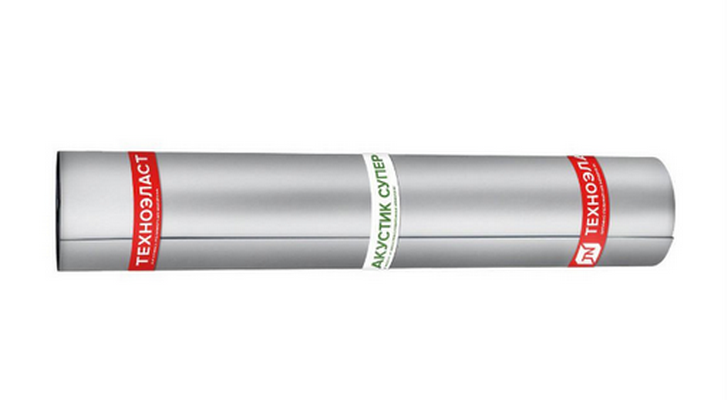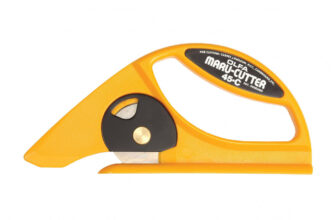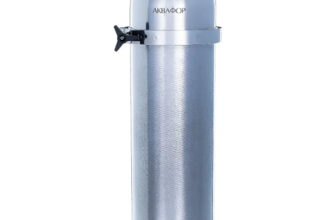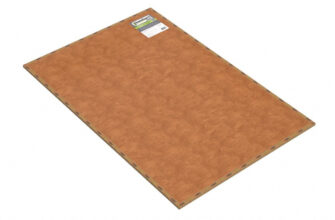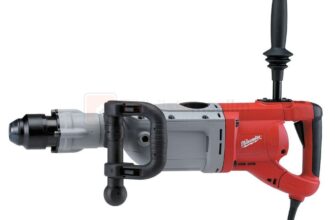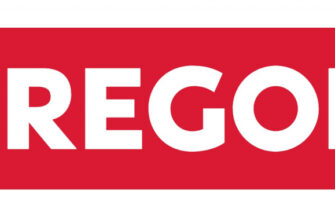Review of the best according to the editorial board. On the selection criteria. This material is subjective and does not constitute advertising and does not serve as a purchase guide. Before buying, you need to consult with a specialist.
The most important element of a residential building or apartment is sound insulation. The less extraneous sounds and noises enter the room from the street or from neighbors, the more comfortable the residents will feel. The owners of apartments and houses located next to busy roads or railways pay most attention to floor sound insulation. Insulation materials, as well as modern flooring technologies, help to reduce noise and vibration load. A wide range of noise isolators is presented on the Russian market. Recommendations of our experts will help you to choose the material that is optimal for the price and characteristics.
- Recommendations for choosing sound insulation
- Rating of the best materials for floor sound insulation
- TECHNOELAST ACOUSTIC
- Advantages
- disadvantages
- SoundGuard EcoAcoustic
- Advantages
- disadvantages
- Vibrostack-V300
- Advantages
- disadvantages
- SoundGuard Isokover
- Advantages
- disadvantages
- Texound
- Advantages
- disadvantages
- Shumanet-100 Combi
- Advantages
- disadvantages
- StP NoiseBlock
- Advantages
- disadvantages
- Soundproof VEM 4 smk
- Advantages
- disadvantages
- Knauf AcousticKnauf Stove
- Advantages
- disadvantages
- Isover SoundProtection
- Advantages
- disadvantages
- Penoterm NPP LE 8 mm
- Advantages
- disadvantages
- Stone wool
- Advantages
- disadvantages
- Expanded polystyrene
- Advantages
- disadvantages
- Bung
- Advantages
- disadvantages
Recommendations for choosing sound insulation
Noise reduction index. To assess the effectiveness of a material, manufacturers indicate a parameter such as a noise reduction index. Most often it denotes the level of noise reduction with a single layer of insulator installation. On average, the noise reduction index for most materials is in the range of 20-30 dB. This will be enough if a high-quality floor or floor is made in the apartment, which delays up to 50-55 dB. Measurements show that the cry of a child or the cry of an adult reaches 75 dB.
Environmental friendliness. Sound isolators are made from various natural and synthetic materials. Therefore, the degree of influence on the human body is different for them.
- The safest are considered to be noise insulators made from natural raw materials. These can be natural minerals or plant products.
- Modern synthetic sound insulators are made without the addition of harmful compounds. Increasingly, manufacturers are abandoning such a binder, such as phenol-formaldehyde resin.
- Some noise insulation materials are dangerous to the human body only at the stage of moving or laying due to the formation of dust. In the future, they do not pose a danger to the residents of the house.
Strength. Since the floor is subjected to the highest loads, strength will be an important characteristic of the sound insulator. Some materials are highly elastic, others are small. The strength of the noise insulator may decrease over the years, this indicator is negatively affected by UV radiation, moisture and temperature drops.
Installation technology. When choosing a soundproofing material, it is important to consider the installation technology.
- At the construction stage, the best option would be to lay a sound absorber under the screed or between wooden logs. A thin underlay will be required for finishing flooring.
- If there is no air gap between the screed and the floor covering, foam products should be preferred.
- Soundproofing boards are stacked close to prevent sound waves from entering the room through gaps and joints. Ease of installation will depend on the ease of cutting, the method of fixing and the thoroughness of the preparation of the base.
We have selected 14 of the best materials for floor sound insulation for our review. All of them are sold in construction stores in the country. When allocating seats, the editorial board of the magazine relied on the opinion of the expert community, taking into account the reviews of Russian consumers.
Rating of the best materials for floor sound insulation
| Nomination | a place | Name of product | rating |
| Rating of the best materials for floor sound insulation | 1 | TECHNOELAST ACOUSTIC | 5.0 |
| 2 | SoundGuard EcoAcoustic | 4.9 | |
| 3 | Vibrostack-V300 | 4.8 | |
| 4 | SoundGuard Isokover | 4.7 | |
| 5 | Texound | 4.6 | |
| 6 | Shumanet-100 Combi | 4.5 | |
| 7 | StP NoiseBlock | 4.4 | |
| 8 | Soundproof VEM 4 smk | 4.3 | |
| 9 | Knauf AcousticKnauf Stove | 4.2 | |
| 10 | Isover SoundProtection | 4.1 | |
| 11 | Penoterm NPP LE 8 mm | 4.0 | |
| 12 | Stone wool | 4.0 | |
| 13 | Expanded polystyrene | 4.0 | |
| 14 | Bung | 4.0 |
TECHNOELAST ACOUSTIC
Rating: 5.0
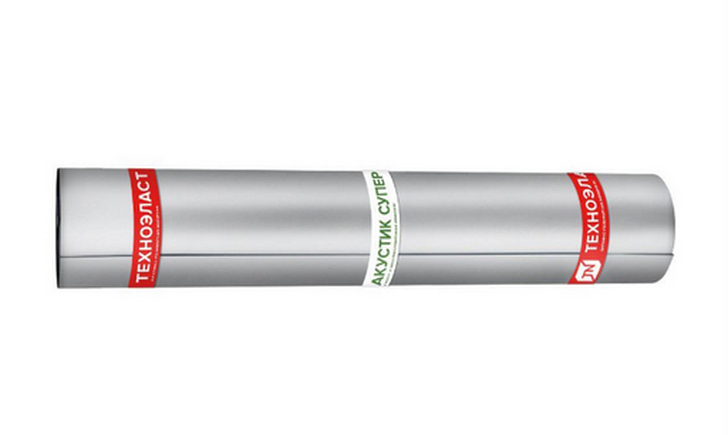
The multilayer structure makes the TECHNOELAST ACOUSTIC material the best noise isolator. The basis of the composite is fiberglass and bitumen-polymer mass; a metal film is used as a coating. Experts consider the product to be a versatile soundproofing material that can be installed with the same effect on concrete floors or wooden joists, on heated systems or floating structures. The manufacturer supplies the sound absorber in rolls, which makes it convenient for transportation and installation. The TECHNOELAST ACOUSTIC asset should also include waterproofing properties.
Tests have proven the effectiveness of the application of the material, after laying one layer, the noise level decreased by 27 dB. The disadvantages include the high price.
Advantages
- noise retention efficiency;
- ease of use;
- wide scope;
- waterproofing properties.
disadvantages
- high price.
SoundGuard EcoAcoustic
Rating: 4.9
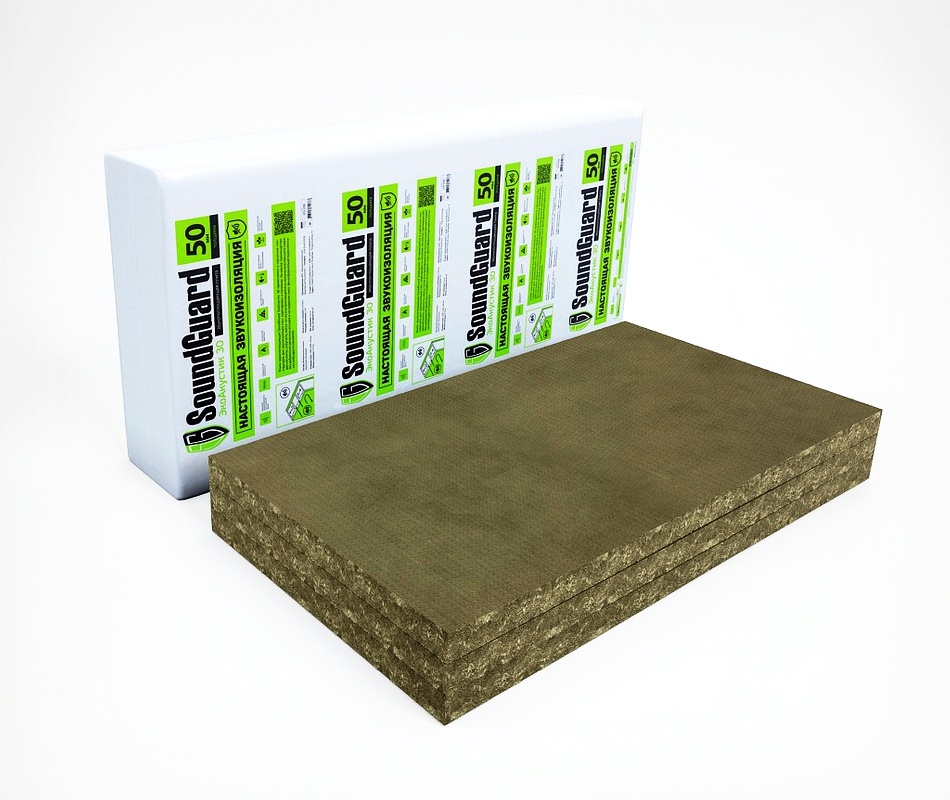
Sound-absorbing panels SoundGuard EcoAcoustic are widely used in frame structures. They are installed when constructing walls, ceilings and floors. The experts appreciated the versatility of the material, it is suitable for concrete and wood floors, for floating structures and heated systems. The advantages of the plate include light weight, elasticity, environmental friendliness. Blast-furnace waste and phenol-formaldehyde resins are not added during production. The noise isolator does not cause an allergic reaction, it is easy to install. The material wins silver in our review.
Homeowners are pleased with the accuracy of panel manufacturing, environmental friendliness, and effective absorption of sound waves. They consider the disadvantage of the high price and the rash of filler.
Advantages
- universality of application;
- elasticity;
- environmental friendliness;
- simple installation.
disadvantages
- high price;
- the filler spills out.
Vibrostack-V300
Rating: 4.8
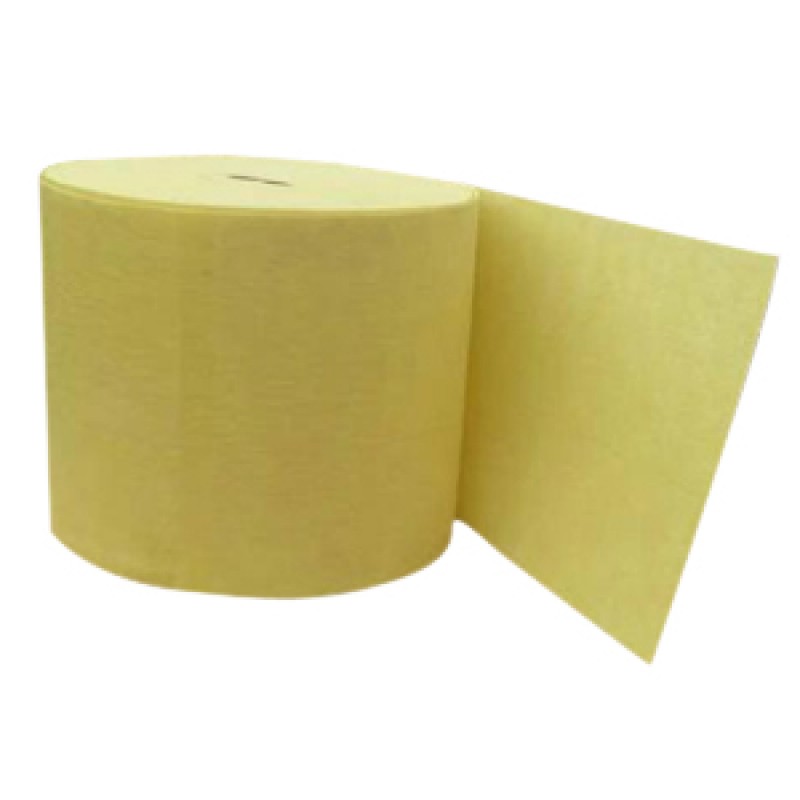
Another domestic material Vibrostek-V300 demonstrates good noise reduction efficiency. One layer of the product reduces sound exposure by about 29 dB. In this case, the thickness of the roll material is only 4 mm. The basis of this backing is fiberglass, which is highly resistant to stress. The sound insulator can be laid under a laminate or parquet board, or under a concrete screed. Experts pay attention to the need for a reliable waterproofing layer, since Vibrostek-V300 absorbs moisture well. The material is supplied in rolls with a length of 450 m.
Users are satisfied with the noise canceling performance, the thinness of the isolator, and the ease of use. Of the shortcomings, the destruction of sound insulation is noted when water enters.
Advantages
- noise reduction efficiency;
- resistance to high loads;
- versatility;
- ease of use.
disadvantages
- low resistance to moisture.
SoundGuard Isokover
Rating: 4.7
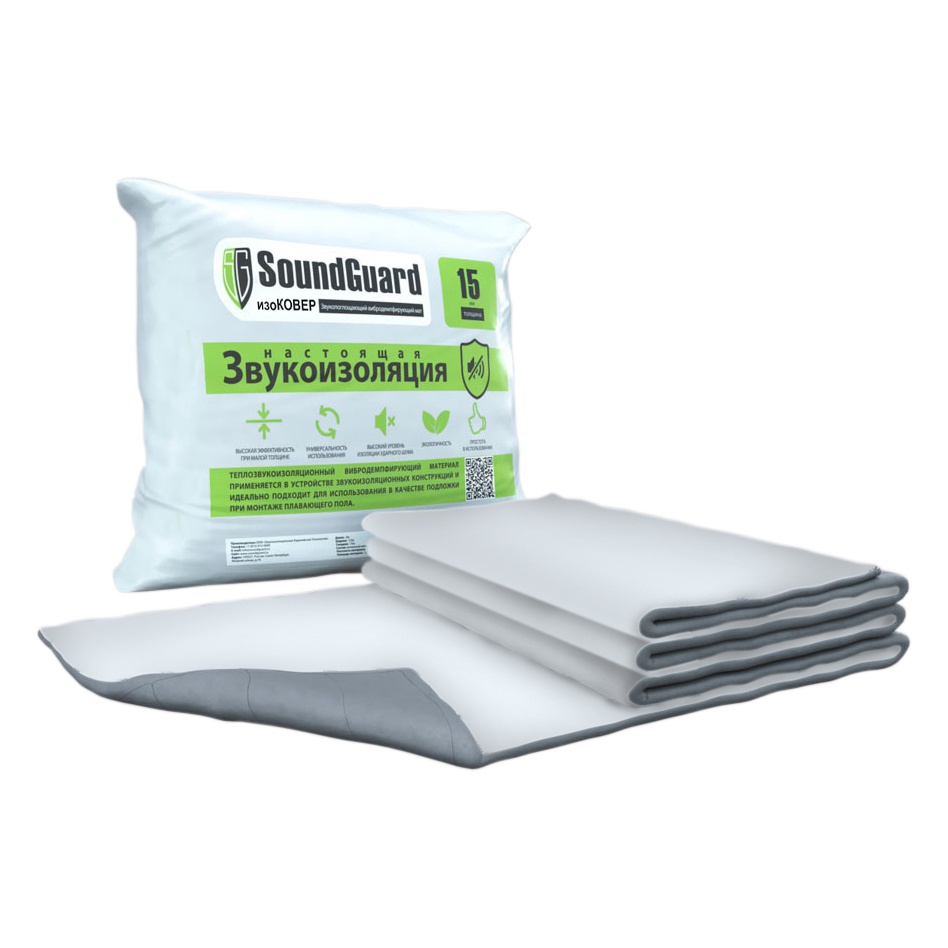
The innovative SoundGuard iso-cover material is versatile and multifunctional. The experts highly appreciated the sound and vibration insulation properties. The basis of the noise insulator is a needle-punched fiberglass canvas, which is pressed and then brazed with a protective spunbond coating. The scope of application is wide enough, from ceilings to floors. The product can be used as a substrate or vibration damping pad under concrete screed. On sale there are rolls 1.5 m wide and 5 m long.
Domestic consumers praise the sound insulator for its versatility, efficiency and easy installation. Among the shortcomings mentioned are the smaller actual dimensions of the canvas (up to 5 cm from each edge) and inflated prices.
Advantages
- multifunctionality;
- versatility;
- ease of installation;
- efficiency.
disadvantages
- smaller actual sizes;
- overcharge.
Texound
Rating: 4.6
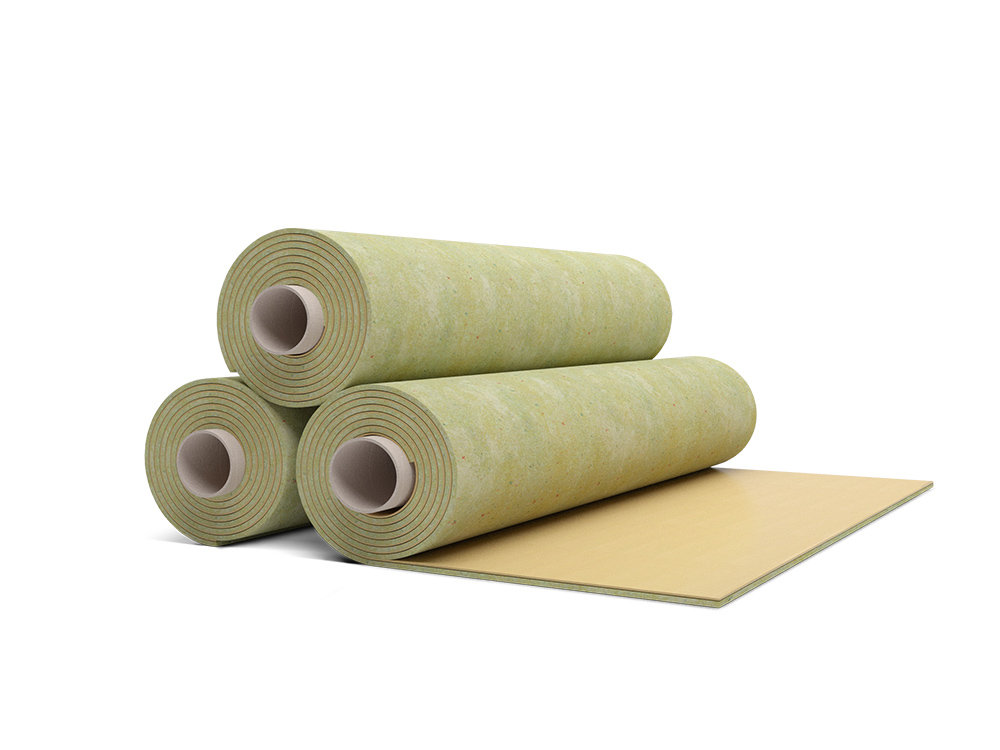
Innovative technologies were used by a Spanish manufacturer in the manufacture of soundproof material Texound. The basis of the membrane is aragonite and polymers, absolutely harmless to humans. For effective noise reduction, a specially created composite is introduced into the elastic canvas, which is not inferior in its parameters to lead. The high soundproofing properties of the material are maintained even at low temperatures (-20 ° C). The substrate is only 3.7 mm thick. Experts say Texound cuts any kind of noise exposure in half. It is possible to lay the canvas both under the finishing flooring and under the concrete screed.
Domestic users note environmental friendliness and biostability, high efficiency with a small thickness. The downside is the very high price.
Advantages
- elasticity;
- environmental friendliness;
- resistance to low temperatures;
- high efficiency.
disadvantages
- high price.
Shumanet-100 Combi
Rating: 4.5
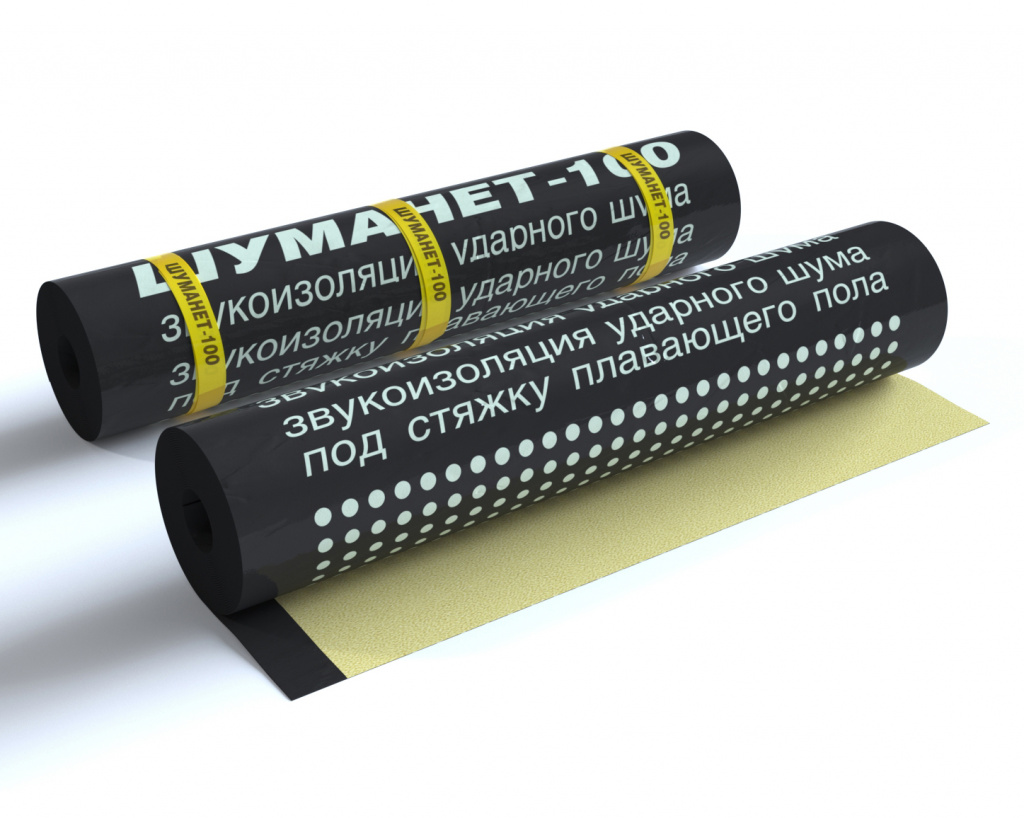
A popular soundproofing material for floating floors is the Russian development Shumanet-100 Combi. The experts liked the effective absorption of impact noise, which was achieved through the combination of a synthetic fiber layer and a bitumen base. The advantages of the product include resistance to high temperatures (+ 85 ° C), excellent waterproofing properties, a good impact noise reduction index (26 dB). The single-layer substrate has a thickness of 5 mm, a length of 10 m and a width of 1 m. The noise isolator closes the TOP-6 of our review.
Residents of apartment buildings speak flatteringly about the effectiveness of reducing impact noise. But loud speech or music is not delayed by the material. There are difficulties with the installation of a two-layer product.
Advantages
- heat resistance;
- waterproofness;
- effective absorption of impact noise;
- small thickness.
disadvantages
- complex installation;
- Doesn't delay loud music and voice.
StP NoiseBlock
Rating: 4.4
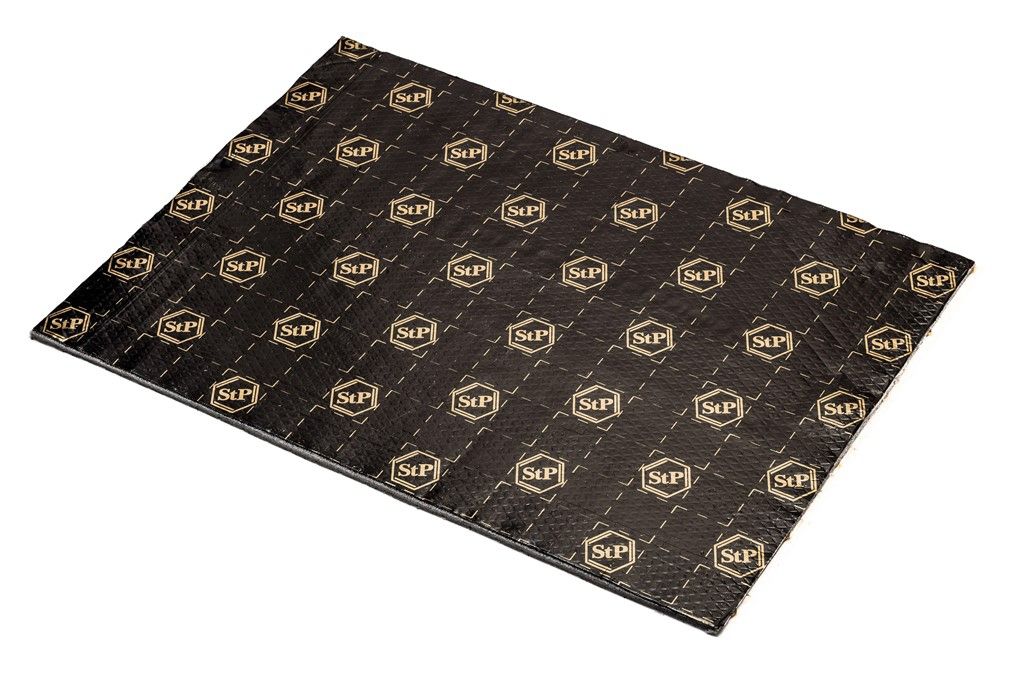
Sound-insulating material StP NoiseBlock has a self-adhesive surface. It is a multi-layer web based on a sticky polymer layer. The adhesive base is protected with anti-adhesive paper, the front part is covered with a non-woven fabric. Noise reduction is achieved by forming a continuous floor carpet. The good sound insulation properties of the product were also noticed by motorists, they use a sound insulator as a substrate under the underbody upholstery.
Users highly appreciated the ease of trimming, ease of installation, and affordable price. But the material sticks strongly to itself, after which it becomes unusable. In addition, the floor surface must be carefully prepared before gluing.
Advantages
- affordable price;
- easy to cut;
- effective noise suppression;
- light weight.
disadvantages
- careful handling is required;
- thorough preparation of the base.
Soundproof VEM 4 smk
Rating: 4.3
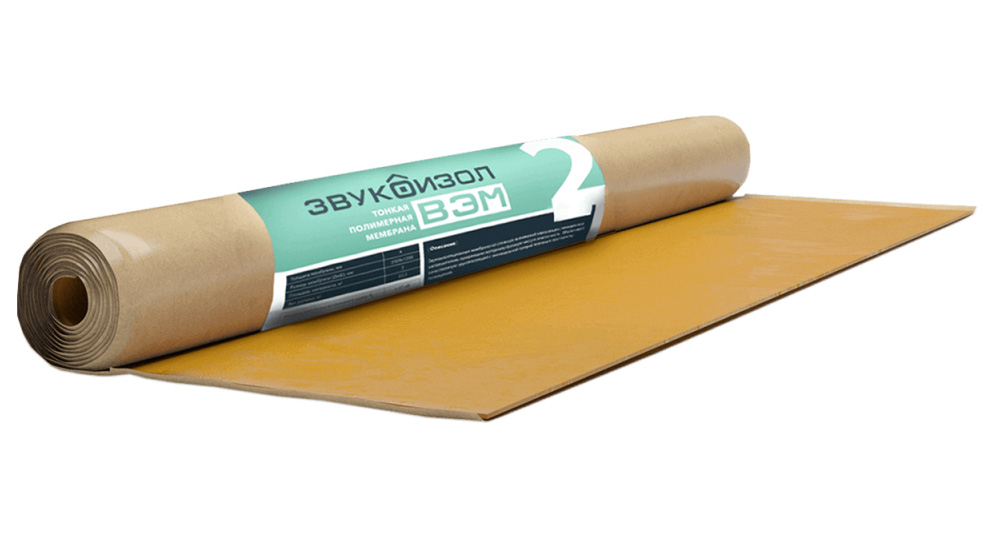
The soundproof membrane Soundproofing VEM 4 smk attracted the attention of experts for its affordable price. It is a 4 mm thick polymer composition with a self-adhesive base. The material is designed for noise and vibration isolation of various types of structures. A single layer substrate reduces noise by 27 dB. The membrane retains elasticity at low temperatures (-25 ° C), elongation at break reaches 300%. The manufacturer does not recommend gluing the sound absorber to a concrete base, since the effectiveness of the material decreases. The product is left in the distribution network in rolls of 1.2×2.5 m.
Domestic users on construction forums speak flatteringly about the affordability of the material and high elasticity. But they doubt the declared noise reduction index.
Advantages
- universality of application;
- frost resistance;
- elasticity;
- affordable price.
disadvantages
- exaggerated noise reduction index.
Knauf AcousticKnauf Stove
Rating: 4.2
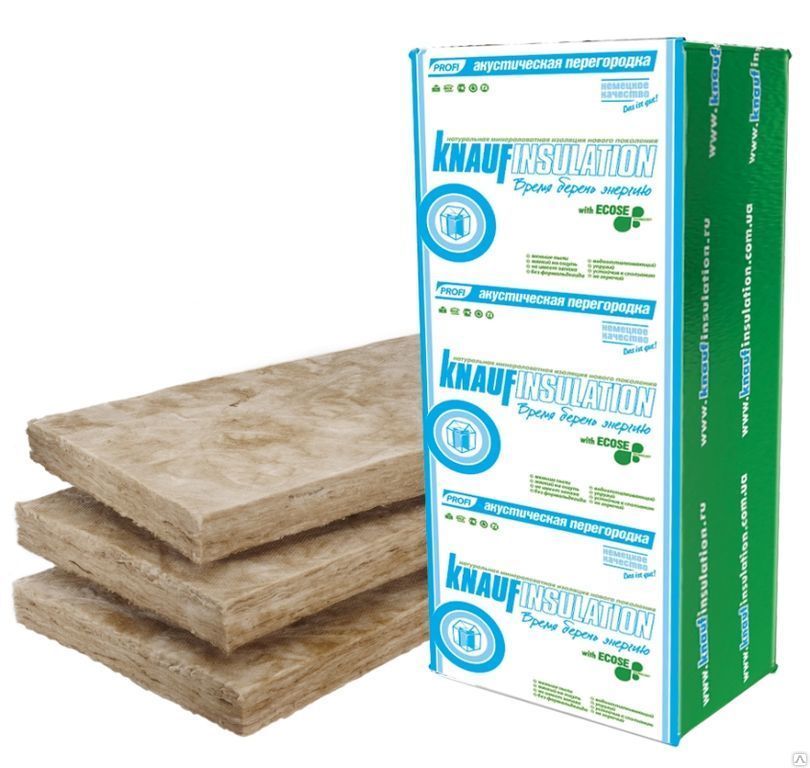
Knauf, a well-known building materials manufacturer, modernized its production in 2015. As a result, the innovative product AkustiKnauf, created using ECOSE technology, appeared on the Russian market. The series is characterized by thin and long fibers, due to which the noise level with a single layer installation can be reduced to 57 dB. Since there are no phenol-formaldehyde resins in the composition, experts attribute the product to environmentally friendly materials. An important advantage of the plate is incombustibility. The noise isolator is recommended for use not only in residential buildings, but also in children's institutions.
The low place in the review of an innovative product is explained by the following shortcomings. Users do not like the bulkiness of the plates, poor absorption of low-frequency sounds.
Advantages
- environmental friendliness;
- high noise absorption index;
- wide scope;
- ease of installation.
disadvantages
- inconvenient to transport;
- skips low-frequency sound.
Isover SoundProtection
Rating: 4.1
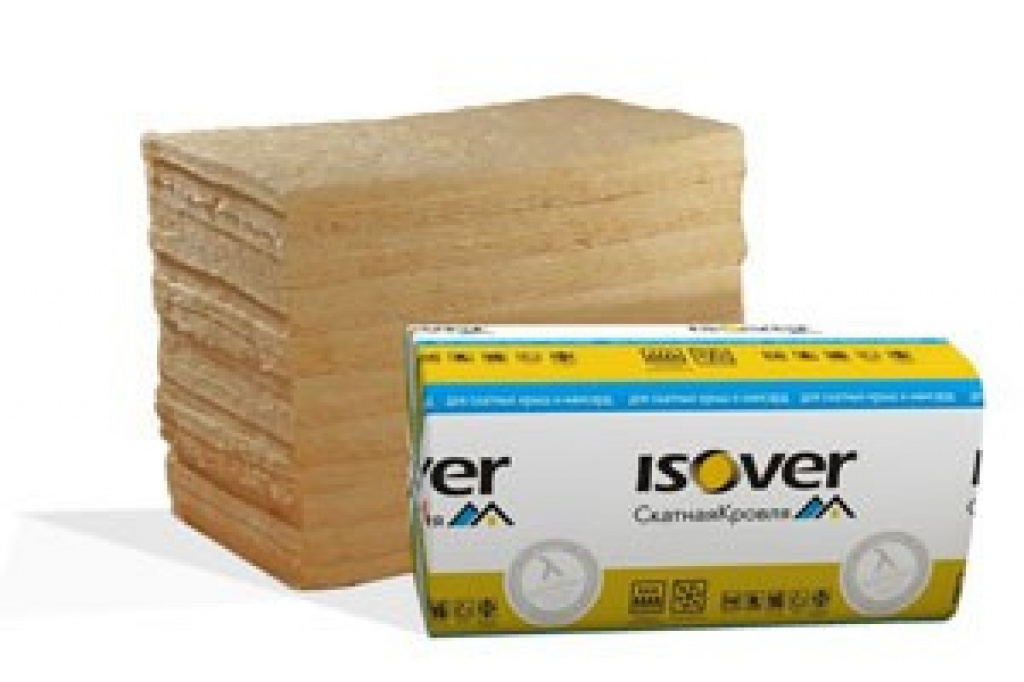
The basis of the soundproofing material Isover SoundProtection is mineral wool. It is made in the form of a 600 mm wide glass plate. Experts note the high level of acoustic parameters, the product is recommended for use in the construction of internal floors and ceilings. There are no harmful compounds in the composition, the new binder is made from renewable raw materials. The advantages of a sound insulator include excellent thermal insulation properties, air permeability, and fire safety. The material is easy to assemble, easy to cut.
As for the disadvantages, builders note low resistance to moisture. During installation, the smallest fiberglass particles can enter the respiratory tract and eyes.
Advantages
- effective noise reduction;
- thermal insulation properties;
- fire safety;
- simple installation.
disadvantages
- low moisture resistance;
- it is necessary to work in personal protective equipment.
Penoterm NPP LE 8 mm
Rating: 4.0
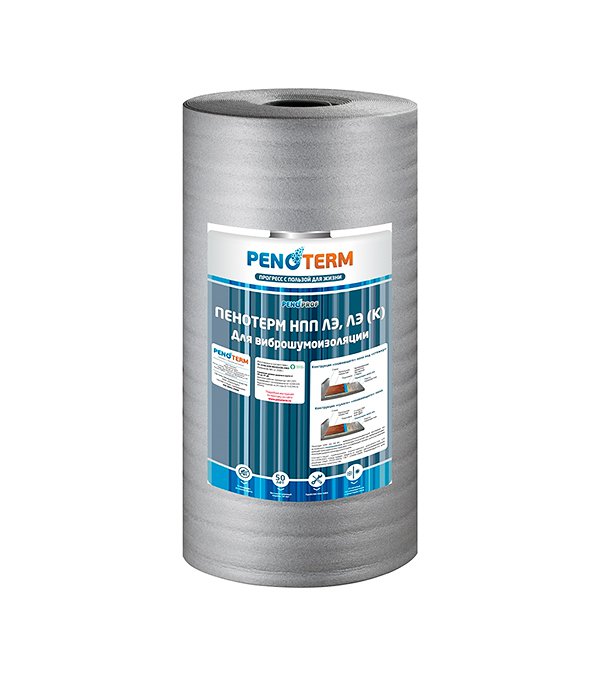
Noise-insulating material Penoterm NPP LE is produced in a wide range of thicknesses (6-10 mm), experts recommend stopping at the 8-mm modification for flooring. The sound protection level of a single layer is up to 22 dB. The domestic manufacturer used expanded polypropylene foam, which has a foil coating, as a basis. The material is excellent for laying between joists or when pouring concrete screed. Experts use Penotherm and as a substrate for a parquet board or laminate. The service life of the material exceeds 50 years, while the sound insulation properties do not deteriorate.
Domestic users are satisfied with the affordable price, environmental friendliness, versatility of use. Disadvantages include waviness and modest noise reduction.
Advantages
- affordable price;
- versatility;
- environmental friendliness;
- ease.
disadvantages
- waviness;
- modest noise cancellation.
Stone wool
Rating: 4.0
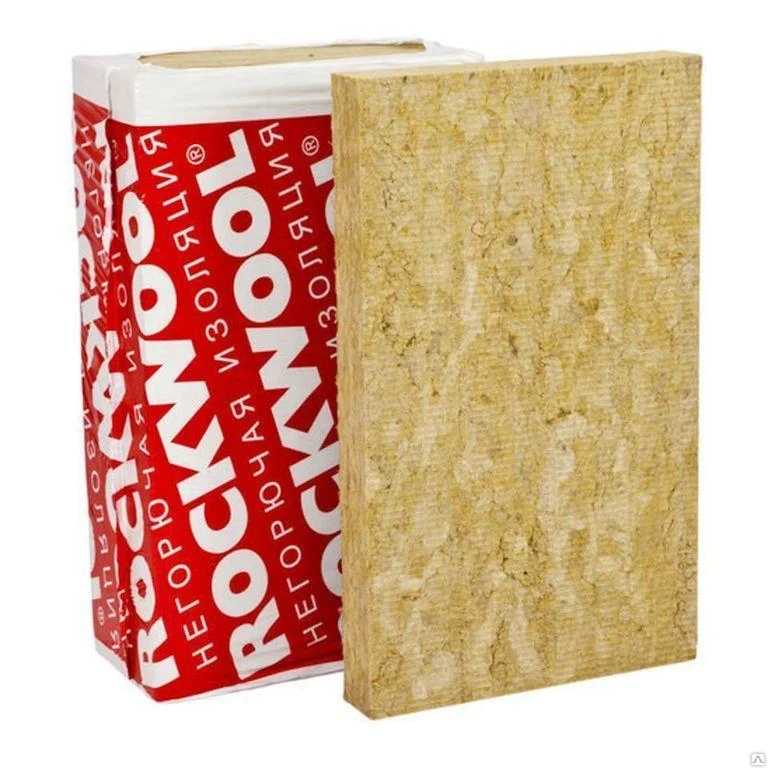
At the same time, stone wool allows you to insulate the floor and create reliable protection against noise. Experts believe that using the material, you can save a lot. The pluses of the sound insulator include fire resistance (up to 1000 ° C), affordable price, durability. Installation of stone wool does not cause problems. The optimal area of application of the sound insulator is considered to be laying between wooden logs. But before installation, you need to take care of the waterproofing of the floor, since stone wool has a high level of hygroscopicity.
In the process of installing the floor, builders should use personal protective equipment, since the smallest particles can enter the respiratory system. Rodents can settle in the material, so the use of a metal mesh with small cells is required.
Advantages
- refractoriness;
- affordable price;
- excellent thermal insulation properties;
- durability.
disadvantages
- afraid of moisture;
- attracts rodents.
Expanded polystyrene
Rating: 4.0
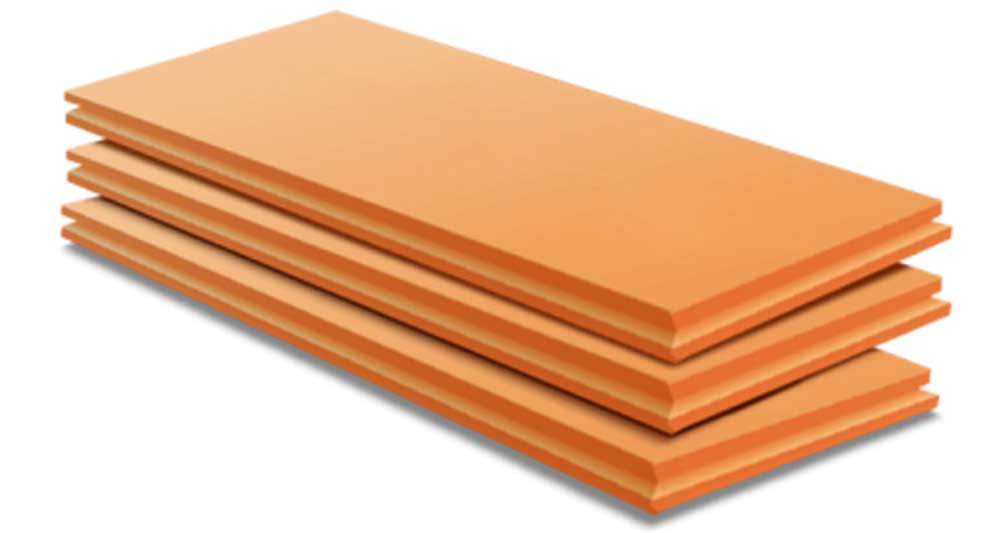
Another material successfully combines heat and sound insulation properties. This is expanded polystyrene. There are many different modifications, the product differs in density, overall dimensions, color, etc. As for the level of sound absorption, a 20 mm thick foam styrene board can reduce the noise load by 23 dB. Expanded polystyrene is widely used when pouring concrete screed, as well as as a substrate for a finishing floor covering. Experts appreciate the sound insulator for its durability (up to 100 years), lightness and ease of installation. The material is great for installing a floor heating system.
Polystyrene foam also has disadvantages. Users are dissatisfied with the ease of deformation of the boards, the high cost, and also the tendency to fire.
Advantages
- a wide range of;
- moisture resistance;
- durability;
- environmental friendliness.
disadvantages
- easily deformed;
- the tendency to fire.
Bung
Rating: 3.9
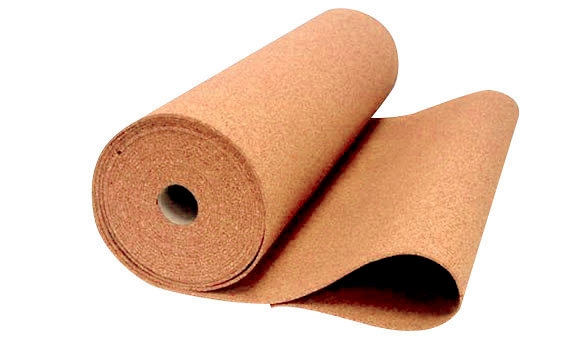
Cork is a natural sound insulator, which also has low thermal conductivity. An environmentally friendly product can be used both in residential buildings and apartments, and in the construction of children's institutions. The material is not allergic. The technical plug is placed on top of a concrete screed or between wooden joists. Noise reduction of a 10 mm thick cork layer reaches 22 dB, experts note two-way sound damping. The advantages of a sound insulator include moisture resistance, high fire-fighting properties, and resistance to biological damage.
Cork is not in high demand among Russian users. One of the reasons for the low popularity is the high price and fragility.
Advantages
- environmental friendliness;
- universality of application;
- moisture resistance;
- fire safety.
disadvantages
- high price;
- fragility.
Attention! This rating is subjective and does not constitute an advertisement and does not serve as a purchase guide. Before buying, you need to consult with a specialist.

